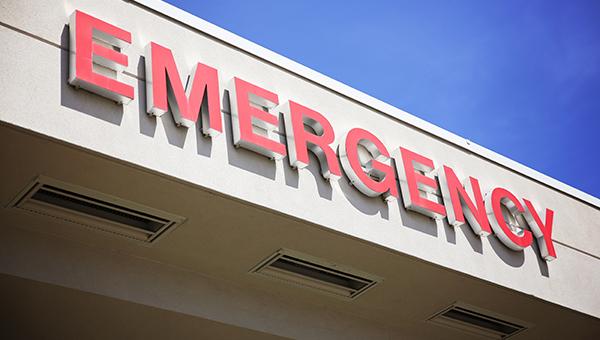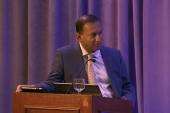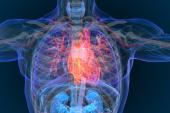Timely PCI May Outweigh Hospital Factors for ACS Patients With Cardiogenic Shock
In an Australian registry, centers with higher volume and surgical backup didn’t achieve better survival.

Patients with acute coronary syndromes complicated by cardiogenic shock (ACS-CS) who undergo PCI fare similarly regardless of whether their treating hospital does or doesn’t have cardiac surgical support, Australian registry data suggest. The number of PCIs that a hospital does in cardiogenic shock each year also has no apparent impact on mortality risk.
These findings “support the emergent treatment of these gravely ill patients at their presenting PCI-capable hospital,” Samer Noaman, MBChB (University of Melbourne, Australia), and colleagues write.
In an email to TCTMD, senior author William Chan, MBBS, PhD (University of Melbourne), pointed out that their study shows there is much room for improvement in ACS-CS care. “Mortality among patients presenting with ACS-CS has not appreciably changed post-SHOCK trial, underscoring an unmet need that has yet to be realized despite improvements in multiple facets of interventional cardiology practice over the past three decades,” he said. Their data call for a pragmatic approach that emphasizes rapid treatment, with decisions about transfer being “secondary after initial emergent revascularization,” Chan added.
Srihari S. Naidu, MD (Westchester Medical Center, Valhalla, NY), who wasn’t involved in the study, said it addresses an interesting question related to systems of care: “Should we translate how we handle PCI for STEMI care to [apply to] the sickest population of patients in cardiogenic shock?”
But, he cautioned, the Victorian Cardiac Outcomes Registry (VCOR) data could be read in two ways—that outcomes are just as good at smaller centers as they are at larger centers, or that outcomes are lacking across the board. For him, the numbers show there is “a long way to go here, because even at larger hospitals with more resources we can’t improve mortality,” said Naidu, who noted that very few patients in the registry received mechanical circulatory support (MCS).
The study was published online today ahead of print in JACC: Cardiovascular Interventions.
VCOR Data: 2014-2018
The researchers looked at data from VCOR on 1,179 prospectively enrolled patients (mean age 65 years; 74% men) with ACS-related cardiogenic shock who underwent PCI at one of 26 hospitals between 2014 and 2018. Ninety percent presented with STEMI, and 38% experienced cardiac arrest.
During the 4-year study period, 65.5% of patients were treated at hospitals with surgical backup and 34.5% at hospitals that lacked this support. Age, sex, and body mass index were evenly balanced, though the patients at the surgical-backup centers were more likely to have cerebrovascular disease and prior CABG surgery. Patients at the nonsurgical centers were more apt to have received ticagrelor preloading and less likely to have been transferred from another hospital.
In both groups, primary PCI for STEMI was the dominant presentation. Door-to-balloon times were similar for both hospital types, though symptom-to-balloon times tended to be shorter at centers without surgical backup (median 194 vs 217 minutes; P < 0.01). PCI was more likely to be successful in nonsurgical centers (90% vs 86%). Extracorporeal membrane oxygenation (ECMO) was infrequent but more common at centers with versus without cardiac surgery (3.4% vs 0.2%; P < 0.01). Intra-aortic balloon pump (IABP) therapy also was rare, used in about one in eight patients irrespective of surgical backup. None received Impella (Abiomed).
The researchers also analyzed the data based on centers’ annual volume of PCIs done in cardiogenic shock patients: centers with fewer than 10 cases per year treated 27% of patients, those with 10-25 cases treated 33%, and those with more than 25 cases treated 40%. The surgical-backup hospitals were more likely to have higher volumes. The lowest-volume centers tended to treat patients who were younger and more often had prior PCI. The highest-volume centers saw more cardiac arrest.
STEMIs again were evenly distributed. There were no differences in door- or symptom-to-balloon times. ECMO was used more often at high- versus intermediate- and low-volume hospitals (4.9% vs 1.2% vs 0.5%, respectively; P < 0.01).
Mortality rates were 42% in the hospital and 51% over the long term (median follow-up 2.3 years). Adjusted for clinical and procedural factors, there were no differences related to the presence of surgical backup or to cardiogenic-shock PCI volume. Similar results were found in a sensitivity analysis excluding patients who’d been transferred.
Speaking with TCTMD, Naidu noted that this death rate contrasts with the 25-30% mortality seen at institutions that take “a more robust, comprehensive, and protocolized approach to these patients.”
Naidu, who led the recent update to the Society for Cardiovascular Angiography and Interventions (SCAI) shock classification system, said it would be useful to analyze the breakdown of shock severity across hospitals. It may be that the larger centers with surgical backup saw a greater proportion of SCAI stage D and E patients, who would have higher expected mortality than stage C patients, he explained. “That’s not really described here. It’s assumed that everybody has the same type of shock.”
More revealing would be to see if hospitals, based on the shock severity they’re treating, are achieving survival rates better or worse than would be expected, said Naidu.
Until further randomized data can elucidate the role of MCS devices . . . , restoring myocardial reperfusion at the nearest PCI-capable hospital will continue to be the mantra for those gravely sick patients. William Chan
Mirroring the STEMI world, there are conversations in the cardiogenic shock field about how best to optimize care at a regional level. The hub-and-spoke model, wherein some patients merit transfer and others can be safely treated at their local hospital, is one possibility being explored.
Alexander C. Fanaroff, MD (University of Pennsylvania, Philadelphia) and Ashwin S. Nathan, MD (University of Pennsylvania and Corporal Michael J. Crescenz VA Medical Center, Philadelphia), in an accompanying editorial, note that one challenge is that the local hospitals may lack the tools to stabilize patients before transfer. Guidelines are mixed on the subject of transfer thanks to a lack of data, they say, adding that in this light the new report is valuable.
The editorialists, too, point out that the treatment strategies in this data set “do not represent best contemporary practice, especially with respect to the use of mechanical circulatory support,” citing an “emerging consensus that patients with ACS complicated by cardiogenic shock are best managed by multidisciplinary shock teams using invasive hemodynamic measurement and protocols that stress early mechanical circulatory support, rapid revascularization, and transfer to hospitals capable of managing advanced heart failure patients for consideration of durable mechanical circulatory support.”
But the role that lower-volume cardiac cath labs have in providing timely access to PCI can’t be ignored, they stress.
“The current study emphasizes the ability of smaller, lower-volume hospitals to effectively accomplish early reperfusion, the only intervention proven to reduce mortality in ACS complicated by cardiogenic shock, and highlights the importance of the early recognition and treatment of these extremely sick patients, regardless of where they initially present,” Fanaroff and Nathan write.
Chan agreed, noting that the treatment paradigm for ACS-CS should, for now, “prioritize emergent revascularization and equitable and timely access to cardiac cath lab irrespective of availability of cardiac surgery availability.
“Until further randomized data can elucidate the role of MCS devices in the management of ACS-CS, restoring myocardial reperfusion at the nearest PCI-capable hospital will continue to be the mantra for those gravely sick patients,” he concluded.
Caitlin E. Cox is News Editor of TCTMD and Associate Director, Editorial Content at the Cardiovascular Research Foundation. She produces the…
Read Full BioSources
Noaman S, Vogrin S, Dinh D, et al. Percutaneous coronary intervention volume and cardiac surgery availability effect on acute coronary syndrome-related cardiogenic shock. J Am Coll Cardiol Intv. 2022;15:876-886.
Fanaroff AC, Nathan AS. Percutaneous coronary intervention in acute coronary syndrome and cardiogenic shock: ensuring access while maintaining quality. J Am Coll Cardiol Intv. 2022;15:887-889.
Disclosures
- VCOR was originally co-funded by the Victorian Department of Health and Medibank Private. It is currently funded by the Department of Health and Human Services, Victoria, with in-kind funding from Monash University.
- Noaman is supported by the Australian National Health Foundation as well as the National Health and Medical Research Council Centre of Research Excellence in Cardiovascular Outcome Improvement.
- Chan, Fanaroff, Nathan, and Naidu report no relevant conflicts of interest.





Comments